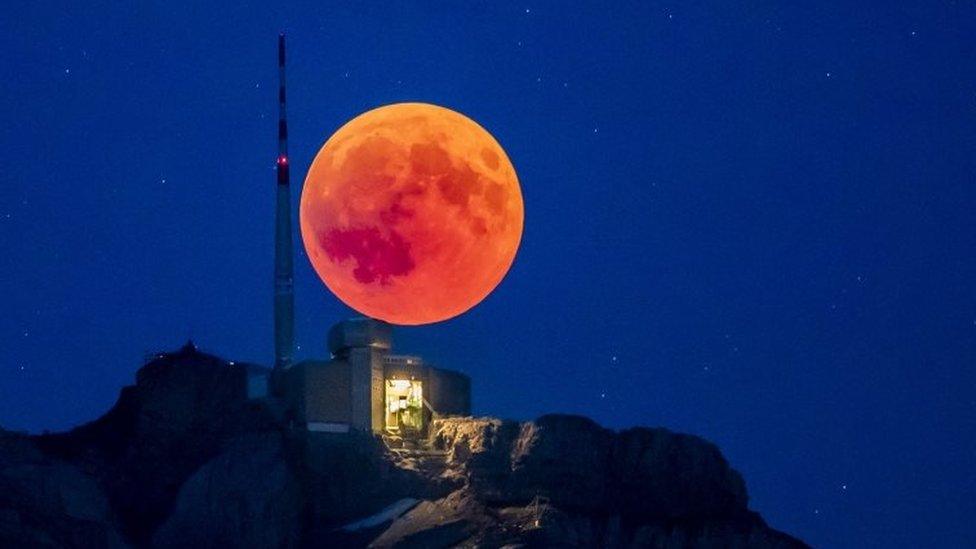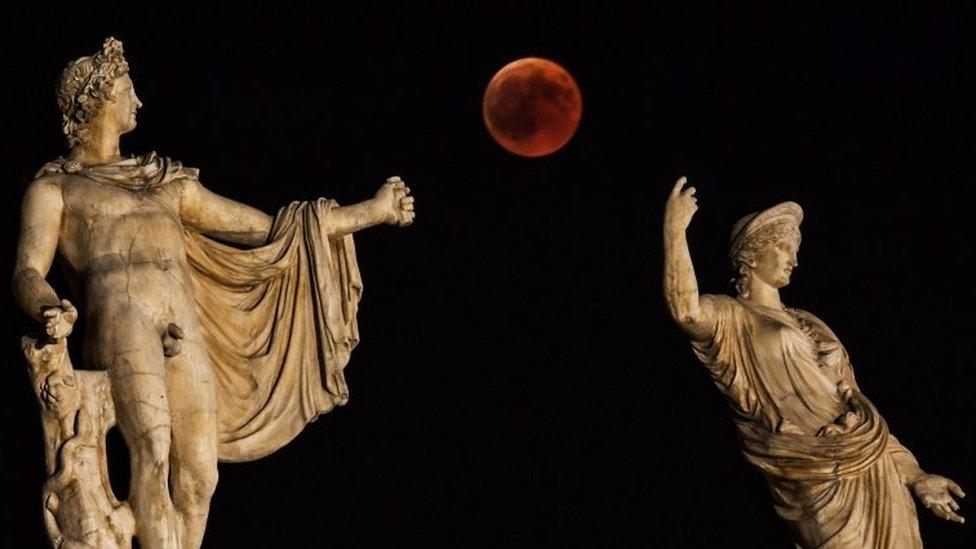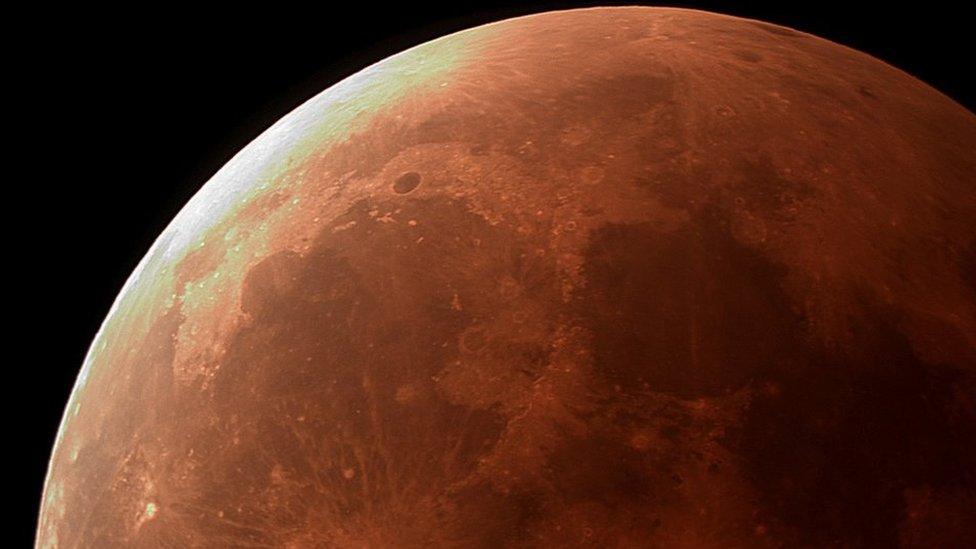A chance to gaze at a 'ghostly' red moon - weather permitting
- Published
What is a lunar eclipse?
It is the stuff of dreams for keen astronomers all around the world; a total lunar eclipse, or blood moon.
On Monday morning, the Earth will block the Sun's light from hitting the Moon, turning it a shade of red - an event that will last for more than an hour.
It will be the last time a total lunar eclipse will be visible from Ireland and Britain for almost 11 years.
The next similar event will take place in December 2029, according to the Armagh Planetarium and Observatory.
Several other eclipses will be visible in 2022, 2025, 2028, and June 2029 - but not to the same extent.
"It's a remarkable sight when the moon turns red. It's quite eerie to see in the sky - a ghostly red moon," says Armagh Planetarium director, Michael Burton.

A blood moon as seen in the Swiss Alps
"We all have some innate wonder of the heavens. I guess, in some sense, it connects us back to our forbearers and the start of mythology about the night sky.
"It's definitely worth getting up for."
When does it happen?
The eclipse will begin at 04:41 GMT, peak at 05:15 GMT, and end at 05:45 GMT.
"The first time I saw a lunar eclipse I was very excited" says Prof Simon Jeffrey, from the Armagh Observatory and Planetarium.
"You watch what is happening and see the change. It's a spectacular thing to watch happen."
The eclipse will be visible right across Ireland, so there's no need to travel any great distance.

The blood moon in July beside a statue of ancient Greek goddess Hera and god Apollo in Athens
What will it look like?
According to Terry Moseley from the Irish Astronomical Association, one of the interesting things about eclipses is we don't know just how red it's going to be.
"My first was 50 years ago and they have all been different," he says.
It can turn anything from a nice bright coppery red, right down to a very deep crimson red, so dark it's almost invisible, according to Mr Moseley.
"It depends on the state of our atmosphere, the amount of dust, dirt and aerosols," he says.
"They're all fascinating and different and occur in different parts of the sky."
Do we need any special equipment to see it?
"Just your eyes," says Mr Moseley, although, of course, a pair of binoculars will give you a better view.
If you want a picture, anything from a digital camera to the camera on your smart phone will be fine.
"If you have a good digital camera, take some exposures and you'll see a nice starry background," he adds.
Where's best to see it?
"You do need to be able to see down towards the western part of the sky, if you want to see the whole of the eclipse," explains Mr Moseley.
"Look out of a window facing towards the south or southwest and to get the rest of the eclipse, you need to have a clear view to the west."
However, you might enjoy a clearer view away from the light pollution from towns and cities.

"It's because it's relatively rare that there is so much interest.
"It shows that things do occur in the heavens that are not routine - it doesn't happen all the time.
"The last one was in 2015, when it was too cloudy."
But, will it be too cloudy this year?
As of Saturday morning, some clear sky is expected at first, but cloud is due to move in from the west by breakfast time.
Our weather is always changing, so it is best to stay tuned to BBC Weather updates closer to the time.
Good luck!
- Published28 July 2018

- Published10 October 2014

- Published21 January 2019
